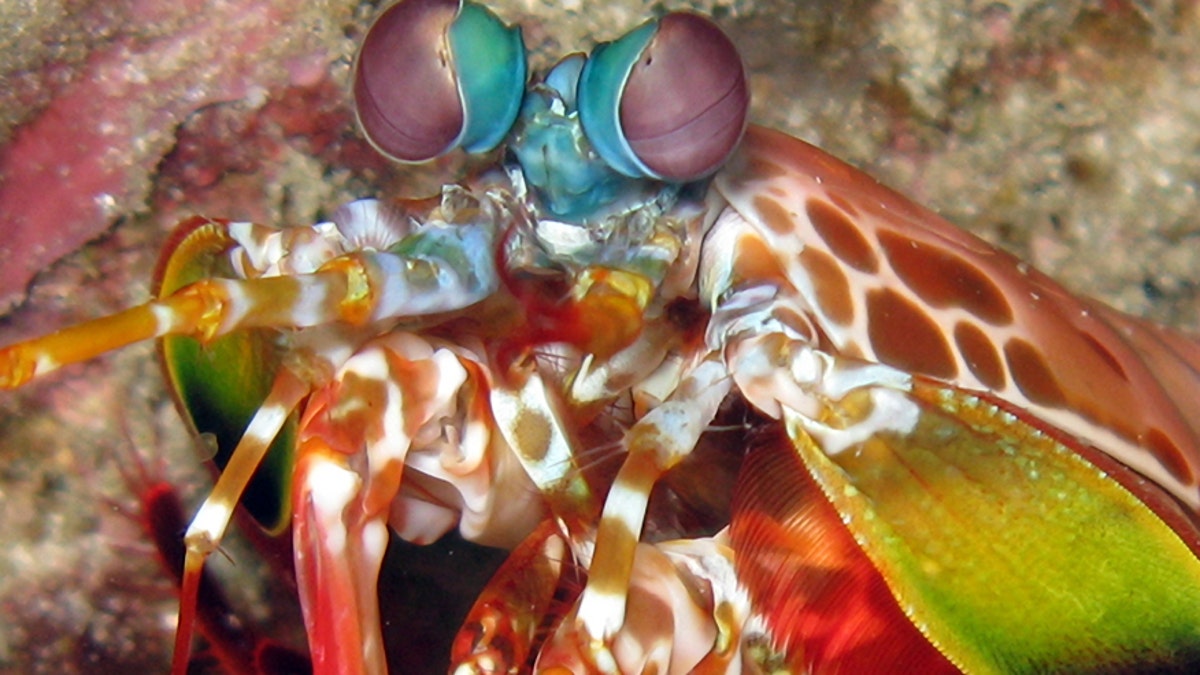
(Silke Baron)
Looking for a way to make tougher, more impact-resistant military airplanes and vehicles? Study shrimp.
The Air Force Office of Scientific Research and the National Science Foundation have funded research into the peacock mantis shrimp, a 4- to 6-inch-long rainbow-colored shrimp that lives in tropical waters and looks like an armored caterpillar.
University of California Riverside has been collaborating with the University of Southern California and Purdue University to study the peacock mantis, hoping it will provide clues to transforming the materials used not only for aircraft frames, but for military body armor, vehicle frames and more.
What’s special about this shrimp is its orange, fist-like club, which – get this – can accelerate underwater faster than a .22-caliber bullet.
In striking its prey, the club actually shears water and boils it, creating cavitation bubbles that implode and cause a secondary impact.
What’s special about this shrimp is its orange, fist-like club, which – get this – can accelerate underwater faster than a .22-caliber bullet.
The shrimp uses its club to destroy mollusk shells and crab exoskeletons, both of which are studied for their own impact resistance.
The club creates an impact force that is more than 1,000 times its own weight. And it’s incredibly resilient; research suggests it can withstand 50,000 high-velocity strikes without breaking during its lifespan.
What’s it made of?
The researchers are investigating the composition of the club, which can withstand the equivalent of 50,000 bullet impacts. In addition to being highly impact-tolerant and shock-resistant, it is lightweight, stiff and tough.
It has a complex structure with three specialized regions, all of which work together to make it tougher than many engineered ceramics.
Like human bone, the club’s surface has a high mineral concentration that helps support the impact when the shrimp strikes.
Inside, there are highly organized and rotated layers of fibers made from a complex sugar called chitin. These fibers are spread through the club and function as a shock absorber.
During high-velocity impacts, the chitin fibers keep the club intact.
The researchers investigated the impact resistance and energy absorption of the club when it was struck, and they evaluated its strength after impact. They used ultrasound scans to measure external and internal damage. The experiments replicated the sort of testing done by the aircraft industry.
From Club to Airplane Frame
The researchers used the club’s spiraled, or helicoidal, layered design to create carbon fiber-epoxy composites that could be used for a range of applications, from aerospace and vehicle frames to body armor and even football helmets.
The potential applications are broad. On airplanes, they could reduce weight, repairs and fuel costs while improving impact resistance. They could make electric cars lighter, increase their range and reduce their power consumption.
The team’s previous research has focused on improving military body armor and reducing current body armor by one-third in weight and thickness.
"The more we study the club of this tiny crustacean, the more we realize its structure could improve so many things we use every day," said David Kisailus, chair of energy innovation at UC Riverside's Bourns College of Engineering.
The UC Riverside team was recently awarded a $7.5 million Department of Defense grant to continue its research.
